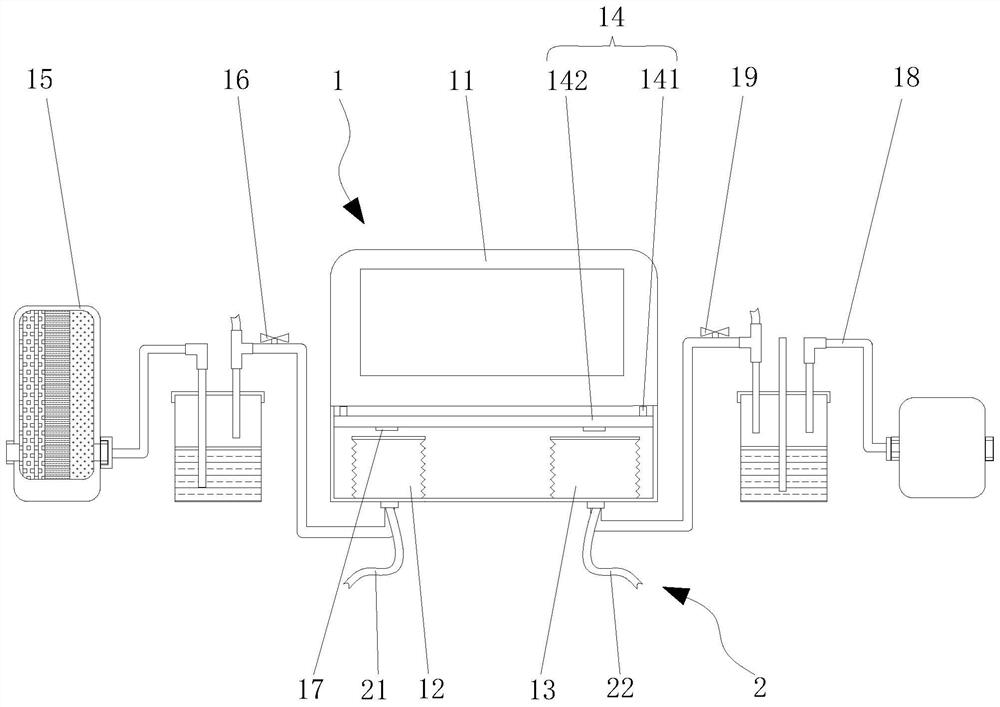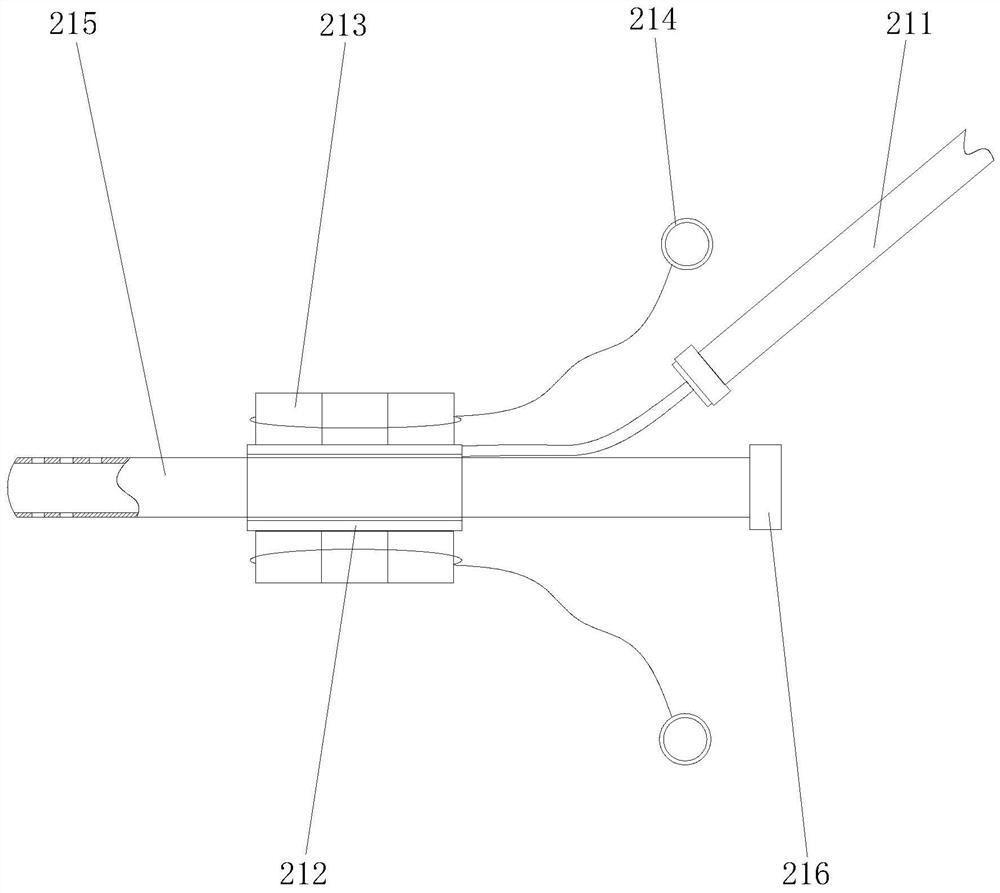Pleura cavity negative pressure ventilation breathing machine and using method thereof
A ventilator and pleural cavity technology, applied in the field of ventilators, can solve problems such as injury, exacerbation of lung diseases, and restrictions on patients' daily life, so as to improve treatment efficiency, reduce the probability of complications, avoid psychological trauma and save money. burden effect
- Summary
- Abstract
- Description
- Claims
- Application Information
AI Technical Summary
Problems solved by technology
Method used
Image
Examples
Embodiment 1
[0033] Please refer to figure 1 , a pleural cavity negative pressure ventilation ventilator, comprising a ventilator main body 1; the ventilator main body 1 is provided with a ventilator, and the ventilator 2 is connected to the ventilator 2 and the ventilator 2 is far away from the ventilator One end of the ventilator body 1 can be inserted into the pleural cavity of the human body through a thoracentesis wound so that the ventilator main body 1 can change the pressure in the pleural cavity. The present invention utilizes the tightness of the pleural cavity of the human body, adopts minimally invasive puncture technology to place the ventilator 2 in the pleural cavity, and changes the pressure in the pleural cavity through the ventilator main body 1 to cause the lungs to collapse and expand without General anesthesia and tracheal intubation are required, and the mechanical pressure on the lung tissue is reduced, which fundamentally solves the defects related to invasive posit...
Embodiment 2
[0041] Please refer to figure 2 , the left ventilator 21 includes a conduit 211; one end of the conduit 211 is connected to the vent and the other end can extend into the pleural cavity so that the main body of the ventilator 1 can inject or pump air into the pleural cavity gas. Further, the end of the catheter 211 away from the ventilation port is connected with a mushroom cap-shaped limiting air bag 3 for preventing the tube body from protruding from the pleural cavity of the human body and ensuring the airtightness of the thoracentesis wound. Preferably, a through hole is opened on the side wall of the end of the conduit 211 away from the air vent, and a wire feeding nozzle communicating with the inner cavity of the conduit 211 is formed on the tube body of the conduit 211 .
[0042] It works as follows:
[0043] The metal soft guide wire is passed into the catheter 211 through the wire feeding nozzle, so that the end of the catheter 211 provided with the through hole an...
Embodiment 3
[0045] Please refer to image 3 and Figure 4 , the end of the conduit 211 away from the ventilation port is connected with an airbag 212 communicating with the conduit 211; the outer wall of the airbag 212 is connected with multiple sets of pressing airbags 213 and the airbag 212 communicates with the pressing airbag 213 ; The pressing airbag 213 is detachably connected with a fixing part 214 so that the pressing airbag 213 can be attached to the outer wall of the airbag 212 in a curled state so that the pressing airbag 213 can enter the pleural cavity. Further, the airbag 212 is a cylindrical structure with a circular cross section, the air inlet nozzle of the airbag 212 is located on its annular end surface, and the air inlet nozzle is connected to the end of the duct 211 away from the air vent; The ring of the air bag 212 is pierced with a central tube 215 with both ends penetrating through it and used for inserting a soft metal guide wire. The side wall of the central tu...
PUM
 Login to View More
Login to View More Abstract
Description
Claims
Application Information
 Login to View More
Login to View More - R&D
- Intellectual Property
- Life Sciences
- Materials
- Tech Scout
- Unparalleled Data Quality
- Higher Quality Content
- 60% Fewer Hallucinations
Browse by: Latest US Patents, China's latest patents, Technical Efficacy Thesaurus, Application Domain, Technology Topic, Popular Technical Reports.
© 2025 PatSnap. All rights reserved.Legal|Privacy policy|Modern Slavery Act Transparency Statement|Sitemap|About US| Contact US: help@patsnap.com



